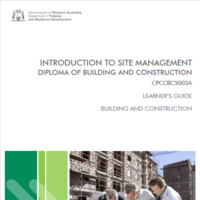Search
Books+
Searching 1,730 books
Search related to the career Architect
An Architect's Responsibilities:
1. Designing: Architects are responsible for creating innovative and functional designs for buildings and structures. They consider factors such as aesthetics, functionality, safety, and sustainability.
2. Planning: Architects develop comprehensive plans and layouts for construction projects. They analyze site conditions, zoning regulations, and client requirements to determine the best approach for the project.
3. Collaborating: Architects work closely with clients, engineers, contractors, and other professionals to ensure that the design and construction process runs smoothly. They coordinate efforts, resolve conflicts, and make adjustments as necessary.
4. Researching: Architects stay up-to-date with the latest building materials, technologies, and construction methods. They conduct research to incorporate innovative and sustainable solutions into their designs.
5. Preparing Drawings and Specifications: Architects create detailed drawings, blueprints, and specifications that outline the design and construction requirements. These documents serve as guidelines for contractors and builders.
6. Overseeing Construction: Architects monitor the construction process to ensure that it aligns with the design intent and meets quality standards. They visit construction sites, address issues, and provide guidance to contractors.
7. Managing Budgets and Schedules: Architects are responsible for managing project budgets and timelines. They estimate costs, track expenses, and ensure that the project stays within the allocated budget and time frame.
8. Ensuring Compliance: Architects ensure that their designs comply with building codes, regulations, and legal requirements. They obtain necessary permits and approvals from relevant authorities.
9. Problem Solving: Architects are problem solvers, as they encounter various challenges during the design and construction process. They find creative solutions to overcome obstacles and ensure project success.
10. Client Communication: Architects maintain regular communication with clients to understand their needs, provide updates, and address any concerns. They strive to deliver designs that meet client expectations.
11. Environmental Considerations: Architects incorporate sustainable design principles to minimize the environmental impact of buildings. They aim to create energy-efficient, eco-friendly, and socially responsible structures.
12. Continuing Education: Architects engage in lifelong learning to stay updated with industry trends, advancements, and best practices. They attend workshops, seminars, and conferences to enhance their skills and knowledge.
13. Professional Ethics: Architects adhere to a code of professional ethics, which includes maintaining client confidentiality, acting in the best interest of the public, and upholding high standards of integrity and professionalism.
Source: Various AI tools
Searched in English.













































